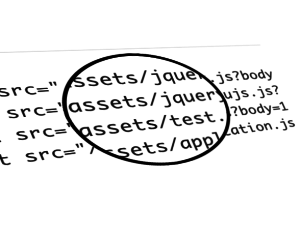A few days ago, the W3C added experimental support for HTML5 to their online markup validation service. There’s been an HTML5 validator available at Validator.nu for a while now, but the addition of HTML5 validation to the W3C’s own site is an important catalyst that is arguably overdue.
There are two basic ways to trigger the validator’s HTML5 parser. Naturally, one way to do it is to explicitly switch the validator into its “HTML5 (experimental)” mode by selecting that option from the “DOCTYPE” menu. (Or, if you’re using some other tools that link to it, use the doctype=HTML5 key/value pair in a URI’s query string.)
The simpler method is to just specify an HTML5 DOCTYPE at the top of your document and let the validator detect that automatically. Here’s one of the simplest HTML5 documents that will successfully validate. Note the very short DOCTYPE at the top.
<!DOCTYPE html>
<html>
<head><title>HTML 5 Markup Validation Test</title></head>
<body>
<p>I'm an HTML 5 document.</p>
</body>
</html>video that are used to—you guessed it—embed video into a web page in a straightforward manner. The video element behaves much like an img element. Like img elements, video elements take a required src attribute that points to a video resource (such as a .mov or .ogg file). Unlike img elements, video elements are not self-closing (“void”) elements so you can (and probably should) provide some alternative content to the embedded video. (Think <noscript>). There’s also a complimentary audio element.
In addition to new embedded content and interactivity, HTML5 also adds a host of additional semantic elements. Among the more unfamiliar tags are <header>, <section>, <nav>, and <aside>, all of which are pretty self-explanatory.
Today, these sorts of structures are often implemented in HTML4.01 as a mishmash of nested <div>s or lists and rely mostly on conventional use of the class or id attributes to provide semantic richness. For instance, whereas we might create a header with a headline in it like this in HTML4.01:
<div id="Header">
<h1>I'm a headline in a header!</h1>
</div><div> with a semantically meaningful <header>.
<header>
<h1>I'm a headline in a header!</h1>
</header>Frequently Asked Questions (FAQs) about W3C Markup Validation Service and HTML5 Support
What is the W3C Markup Validation Service?
The W3C Markup Validation Service is a free online tool provided by the World Wide Web Consortium (W3C). It allows users to check the validity of their web documents in HTML, XHTML, SMIL, MathML, etc. The service helps to ensure that web pages are compliant with web standards, which is crucial for browser compatibility and site usability.
What is the significance of HTML5 support in the W3C Markup Validation Service?
HTML5 is the latest version of HTML, the standard language for designing and developing websites. The addition of HTML5 support to the W3C Markup Validation Service means that developers can now validate their HTML5 documents. This is important because it helps to ensure that HTML5-based websites and applications are correctly coded and can function properly across different web browsers.
How does the W3C Markup Validation Service work?
The W3C Markup Validation Service works by comparing the markup (code) of a web document against the appropriate Document Type Definition (DTD) or schema. This helps to identify any errors or inconsistencies in the code that could potentially cause display or functionality issues in a web browser.
What are the benefits of using the W3C Markup Validation Service?
Using the W3C Markup Validation Service has several benefits. It helps to ensure that your web documents adhere to web standards, which can improve browser compatibility and site usability. It can also help to identify and fix coding errors, which can improve site performance and SEO.
How can I use the W3C Markup Validation Service to validate my HTML5 documents?
To validate your HTML5 documents using the W3C Markup Validation Service, simply go to the service’s website, enter the URL of your web document in the appropriate field, and click “Check”. The service will then analyze your document and provide a report detailing any errors or warnings.
What does it mean when the W3C Markup Validation Service reports an error?
When the W3C Markup Validation Service reports an error, it means that a portion of your web document’s code does not comply with the relevant web standard. The service will provide details about the error, including its location in the code and a description of the problem, to help you fix it.
Can the W3C Markup Validation Service validate other types of web documents besides HTML5?
Yes, the W3C Markup Validation Service can validate a variety of web document types, including XHTML, SMIL, MathML, and others. The service supports multiple Document Type Definitions (DTDs) and schemas to accommodate different web standards.
Is the W3C Markup Validation Service the only tool I need to ensure my website is standards-compliant?
While the W3C Markup Validation Service is a valuable tool for checking the validity of your web documents, it’s not the only tool you should use. Other tools, such as CSS validators and accessibility checkers, can also be useful for ensuring that your website is fully standards-compliant and accessible to all users.
What is the experimental HTML5 support in the W3C Markup Validation Service?
The experimental HTML5 support in the W3C Markup Validation Service is a new feature that allows the service to validate HTML5 documents. This feature is still in development and may not be fully accurate or complete, but it represents a significant step forward in supporting the latest web standards.
How can I contribute to the development of the W3C Markup Validation Service?
The W3C Markup Validation Service is an open-source project, which means that anyone can contribute to its development. If you’re interested in contributing, you can check out the project’s GitHub repository to see how you can help. Contributions can include code, bug reports, feature requests, and more.


